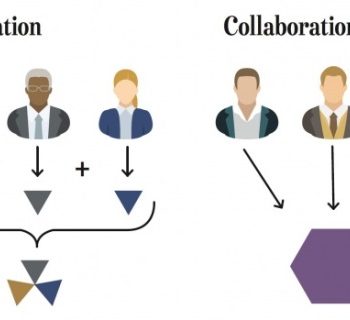Part III – A Framework for Developing Teachers
- On 14-05-2019
In Part I we discussed the influence of deficit versus developmental thinking on the rate of building a relationship and trust between a coach and the teacher. In Part II we unpacked the Transformational and Strategic Leadership aspects that schools need to focus on when building leadership capacity in their schools. In this article we begin to explore the three key elements of the framework for Empowering and Enabling Change in Schools.
Key Model #1: Assessing the Learning Readiness
Regardless of the level of development of an individual one of the factors that influenced an individual’s capacity to be coached was their learning readiness. What the teacher-coaches and I discovered is that some teachers and leaders were eager to learn and thus took coaching well and progressed quickly. On the other hand some teachers and leaders required a lot of evidence before they acted thus progress was slow in building their capacity. I found that the learning readiness of an individual mapped quite well to the much tested theory of the diffusion of innovation.

The diffusion of innovation theory seeks to explain how, why, and at what rate new ideas and technology spread. Everett Rogers, in his book the Diffusion of Innovations, proposed that four main elements influence the spread of a new idea: the innovation itself, communication channels, time, and a social system. Rogers argues that diffusion is the process by which an innovation is communicated over time among the participants in a social system. The innovation must be widely adopted in order to self-sustain.
If we relate this to what occurs in schools then the learning readiness of an individual is based on
- The curriculum or pedagogical practice that is being introduced. For example, an individual might self-assess themselves as being an “early adopter” with regards to new formative assessment practices because they have been enacting versions of formative assessment in their classes for years. However they might assess themselves as “late majority” in embedding technology into their classes. Thus the learning readiness of an individual is influenced by their prior knowledge of the particular practice and their self-perceived competence and confidence in this practice.
- How the new practices are communicated to the individual and the process by which their capacity is being developed. If an individual does not understand WHY a new practice is being embedded and feels that the change is being imposed on them then they will resist rather than adopt. Further, if the communication is from someone they don’t respect the expertise of then again the rate of adoption will be low. The teacher-coaches discovered that some of the teachers they coached required an enormous amount of “why” before they would embark on change – others found that very little communication of “why” was needed before their teachers would enact change. The learning readiness of an individual is thus influenced by their perception of the situational circumstances in the school (i.e. the process by which their capacity is developed) and HOW the information is communicated.
- The time they believe they have to grow and develop their capacity. If a teacher or individual feels that they don’t have sufficient time allotted to embed the new practice and grow their capacity then they will resist. Thomas Guskey pointed out that teacher beliefs and attitudes mostly changed through the process of practicing new pedagogical or curriculum practices. If the teacher perceives they don’t actually have time to embed the new practices (and thus figure out for themselves what it takes to develop their capacity) then this will influence their belief about being ready to learn.
- The social system within the school environment. I will go into this in more depth in Key Model #3 however suffice to say that there is a strong link to Ideas #2 and #3. In other words if there is a high level of trust within the school and the community experience a positive culture of development then this will influence their readiness to learn and grow.
In my experience of working with schools around leading curriculum and pedagogical change it is important to identify those individuals who are able to adopt and test the new ideas and practices quickly. These innovators and early adopters can form the first group who do learning sprints to enhance their practice and find out what works and what doesn’t within the current school environment. It will also have the benefit of providing the local evidence for subsequent adopters of curriculum and pedagogical change and guide the process of creating sustainable change. Further to this is that it becomes critical to identify those who can lead the change well. Having a leader who is not an innovator or early adopter will slow (or even stunt) the progress of change.
You can find out more about how we can partner you in developing leadership within your school or any of our bespoke offerings via our website www.intuyuconsulting.com.au or by contacting Adrian Bertolini at adrian@intuyuconsulting.com.au



0 Comments